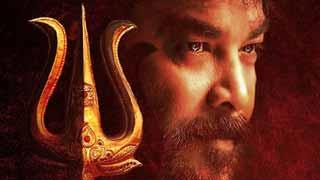With multiple written texts and cinematic adaptations of Ramayan, the story of Lord Ram and Sita needs no introduction. While the audiences are aware of Lord Ram's journey, from his gurukul days to his 'swayamvar' with Sita, 14 years of grueling exile, and the coronation of Lord Ram as King of Ayodhya, not many know of some of the interesting instances that took place after the divine couple's return to Ayodhya. Sony SAB's Shrimad Ramayan, featuring Sujay Reu as Lord Ram and Prachi Bansal as Sita takes the audience through some of the lesser-known stories of Ramayan that provide deep spiritual and moral lessons.
Sindoori Hanuman: A Tale of Devotion and Selflessness
The story of Sindoori Hanuman signifies a devotee's commitment to his deity. Seeing Sita Maa applying sindoor in the parting of her hair for Lord Ram's well-being, Hanuman, in his pure devotion, covers himself entirely with sindoor, wishing for more of his well-being. His actions stem from both innocence and unwavering love for his Lord. The lesson from this story is about wholehearted devotion to one's chosen deity, where love, respect, purity, and selflessness are key to serving the Lord.
The origin of Chhath Puja
Chhath, meaning "sixth" in Nepali, Maithili, and Bhojpuri, is celebrated on the sixth day of Kartikeya in the Hindu Luni-Solar Bikram Sambat calendar. Derived from the Sanskrit word "Sashthi," Chhath Puja is the longest and most important Hindu festival after Navratri, lasting four days. Its is believed Lord Rama and Sita observed this puja after returning from exile, marking the festival's origin. The festival promotes health, wealth, and happiness, as taught by Maudgala Rishi to Lord Rama and Mata Sita. Scientifically, the rituals performed during sunrise and sunset allow the body to benefit from the sun's rays, helping detoxify and rejuvenate the mind, body, and soul.
Hanuman tearing his chest to reveal Lord Ram and Sita in his heart
After Lord Ram's Coronation, Sita gifted Hanuman a pearl necklace and he began breaking each pearl, searching for something. When asked what he was looking for, he explained that he was trying to find Sita Maa and Lord Ram within the pearls, as without them the necklace held no meaning for him. When told that no one can reside everywhere, Hanuman tore open his chest to reveal that Lord Ram and Sita Maa live eternally within him. The lesson from this story is that for a true devotee the most cherished place for the Lord to reside is within the devotee's heart.
Tune in to Sony SAB's Shrimad Ramayan every Monday to Saturday at 7.30 PM
The creation of Sindoori Hanuman to the origin of Chhath Puja: Lesser-known stories that Sony SAB’s Shrimad Ramayan brings to viewers!
Wednesday, September 18, 2024 16:25 IST

















